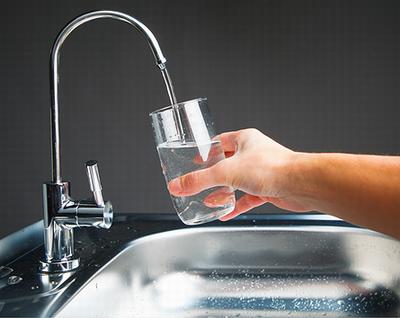
ST. PAUL, Minnesota, August 20, 2021 (ENS) – The Minnesota Pollution Control Agency and Minnesota Department of Natural Resources Wednesday released a drinking water supply plan for the 14 communities affected by the 3M Company’s water pollution in the East Metro, a three county area located just east of the Twin Cities of Minneapolis and St. Paul.
In 2018, the State of Minnesota and 3M settled for $850 million for the damages to groundwater that is the source of the East Metro’s drinking water.
Per- and polyfluoroalkyl substances, PFAS, are a family of synthetic chemicals initially developed by 3M to make products that resist heat, oil, stains, grease and water. Those chemicals were dumped in the East Metro for decades, leading to widespread drinking water contamination.
Since the settlement, state agencies have been working on the Conceptual Drinking Water Supply Plan that outlines safe and sustainable long-term drinking water solutions for residents and businesses impacted by the contamination.
After holding nearly 80 public and workgroup meetings and receiving more than 330 public comments, the state agencies are convinced that this long-term plan will enhance the quality, quantity, and sustainability of drinking water for the 174,000 people in the East Metro.
Click here for the Conceptual Drinking Water Supply Plan, and here for a map showing options for private wells in East Metro.
The plan invests $700 million to build or expand six new water treatment plants, treat 33 municipal wells, connect 296 homes to municipal water systems, and provide a home water filtration system to homeowners with private wells.
Municipal and private wells that meet or exceed the state’s PFAS Health Index will be offered treatment.
Kirk Koudelka, Minnesota Pollution Control Agency assistant commissioner, said, “This plan protects drinking water now, and into the future. The result is a plan that is comprehensive, safe and sustainable, resilient, and flexible to address the growing communities’ needs and an ever-changing PFAS world.”
According to state agencies, the plan is a long-term solution that meets the quality, quantity, and sustainability goals for the region’s drinking water.

The plan provides flexibility for communities to accommodate implementation preferences. As agencies continue to learn more about PFAS and new health-based values are developed in the future, the plan allows for additional treatment options that protect drinking water.
“We want to thank the local communities, work group members, and residents of the East Metro area for their countless hours of engagement with agencies in the development of this plan,” said DNR Assistant Commissioner Jess Richards. “The agencies will continue to work closely with local communities on the implementation of the plan and will regularly assess its effectiveness going forward.”
The MPCA and DNR will host a virtual open house to share the details of the final plan and answer the public’s questions on September 21 starting at 6 pm, local time. For more information on specific drinking water projects in the 14 communities, visit the 3M Settlement website.
3M explains on its website that PFAS stands for a broad group of perfluoroalkyl and polyfluoroalkyl substances that contains several categories and classes of durable chemicals and materials with properties that include oil, water, temperature, chemical and fire resistance, as well as electrical insulating properties.
These characteristics have made PFAS critical to the manufacture of electronic devices such as cell phones, tablets and semi-conductors. They are also used to help prevent infections in surgical gowns and drapes. Commercial aircraft and low-emissions vehicles also rely on PFAS technology.
Chemicals in this class of more than 5,000 substances are found in products like nonstick pans, food packaging, waterproof jackets, and carpets to repel water, grease, and stains. They’re also in firefighting foam often used on military bases and at commercial airports. Even waterproof mascaras and eyeliners, sunscreen, shampoo, and shaving cream can contain PFAS.
Featured image: PFAS are used to give cooking pans a nonstick surface. June 27, 2021 (Photo by Alpha)



